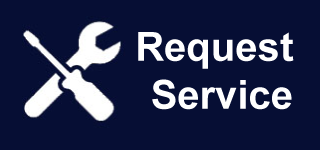Content
The balance sheet is a snapshot representing the state of a company’s finances at a moment in time. By itself, it cannot give a sense of the trends that are playing out over a longer period. For this reason, the balance sheet should be compared with those of previous periods. It should also be compared with those of other businesses in the same industry since different industries have unique approaches to financing. There are many more assets and liabilities that could be included depending on the type of business.
In general, a liability is classified as current when there is a reasonable expectation that the liability will come due within the next year, or within the operating cycle of the business. In cash basis general, any asset is classified as a current asset when there is a reasonable expectation that the asset will be consumed within the next year, or within the operating cycle of the business.
Then liabilities and equity continue from the most immediate liability to be paid to the least i.e. long term debt such a mortgages and owner’s equity at the very bottom. The following balance sheet is a very brief example prepared in accordance with IFRS. It does not show all possible kinds of assets, liabilities and equity, but it shows the most usual ones.
How To Adjust Cash Basis Accounting Entries
It gives insight into a company’s capital structure and helps to analyze its liquidity risk, credit risk and financial risk. Different balance sheet financial ratios reflect financials stability and liquidity of the company. In this manner, balance sheet plays an importance role in investment decisions and management decisions by providing a snapshot of entity’s financial strength. As is seen from the above sample, for the financial year 11-12, the total assets match with the total of owners’ equity ledger account + liabilities viz. A balance sheet is a financial statement that is a “snapshot” of a company’s financial status at one point in time, displayed in two columns of figures with matching totals. The balance sheet is one of the three main financial statements, along with the income statement and cash flow statement. Incorporated businesses are required to include balance sheets, income statements, and cash flow statements in financial reports to shareholders and tax and regulatory authorities.
What happens if the balance sheet doesn’t balance?
On your business balance sheet, your assets should equal your total liabilities and total equity. If they don’t, your balance sheet is unbalanced. If your balance sheet doesn’t balance it likely means that there is some kind of mistake.
A balance sheet is divided into two sections, with one side representing your business’s assets and the other showing its liabilities and shareholders equity. The accounting equation shows that all of a company’s total assets equals the sum of the company’s liabilities and shareholders’ equity. Shareholders’ equity is the money attributable to a business’ owners, meaning its shareholders. It is also known as “net assets,” since it is equivalent to the total assets of a company minus its liabilities, that is, the debt it owes to non-shareholders.
Influencing Future Financial Decisions
Moreover, since every transaction you make influences this report, it’s an essential tool used by lenders and creditors to determine whether they should lend credit to your business. Therefore, it’s all the more important that you keep your bookkeeping up-to-date and accurate and ensure that any balance sheet report you create is correct. A great way to answer some of these questions is to compare your current balance sheet with one from a previous period. Therefore, if you wanted to compare this month’s finances to last month, your report might look like the balance sheet example below. Keeping in mind the possible limitations of your accounting balance sheet, it’s worth considering the different questions you can ask and comparisons you can make to glean particular insights about your business finances. The three sections of the balance sheet consist of line items that state the value of each account within that section. There is no universal format for the balance sheet, so each company’s balance sheet will look somewhat different.
By writing down the values of everything the business owes and owns, one can determine how much the business is worth and allow its owner or shareholders to make better business decisions. The balance sheet is also known as the statement of financial position.
Definition & Example Of A Balance Sheet
After current assets, your balance sheet will list fixed assets, which includes tangible items you use in your business, like equipment, land, or buildings to produce income for your company. This type of assets includes items that are non-physical, but still relevant to your business, like your website domain, copyrights, trademarks, or even goodwill. Assets are what your assets = liabilities + equity business owns or has the right to collect—cash, equipment, accounts receivable, employee advances, etc. Assets are listed first on an accounting balance sheet and are broken up into current assets and fixed assets, as you’ll see below. When a balance sheet of a company is analyzed over several periods, one can find a trend of the financial position of the company.
Now that we have a better understanding of the different pieces that make up an accounting balance sheet, let’s talk about why this particular report is so important. The investors can carry out balance sheet analysis to gauge the performance of the company.
The debt-to-equity (D/E) ratio indicates how much debt a company is using to finance its assets relative to the value of shareholders’ equity. For related insight on balance sheets, investigate more about how to read balance sheets, whether balance sheets always balance and how to evaluate a company’s balance sheet. Different accounting systems and ways of dealing with depreciation and inventories will also change the figures posted to a balance sheet. Because of this, managers have some ability to game the numbers to look more favorable. Pay attention to the balance sheet’s footnotes in order to determine which systems are being used in their accounting and to look out for red flags. The balance sheet is a snapshot, representing the state of a company’s finances as of the date of publication. Assets, liabilities, and owner’s equity are each made up of many smaller accounts.
It can collect its receivables in short order or, if it needs money immediately, it can sell those invoices to a third party — at a discount, but the company can still get that cash by the next business day. But it takes longer to sell inventory, the prepaid expenses have already been spent and the “Other Current Assets” are a mixed bag, some of which could take up to a year to monetize. But companies like Zynga % digital so they don’t have to deal with inventory — tend to shine by this metric. If you add $1.392 billion in Cash and $0.140 in Receivables, then divide the sum by $0.792 billion in Current Liabilities, you arrive at a quick ratio of 1.93.
- The balance sheet is a statement of a firm’s financial position at a specified time, such as the end of month, quarter or year.
- Therefore, companies can repay loans, delay purchases, and perform other activities to influence the end result.
- These are things like loans guaranteed for children, the results of pending litigation, and penalties and interest that may be imposed at the end of a current tax audit.In accounting,such matters are noted in footnotes.
- Liabilities are what your business owes or has an obligation to pay, such as accounts payable, payroll liabilities, loans payable, and customer deposits.
- In fact, the same terms may have different implications depending on what type of business it is.
Fixed assets include land, machinery, equipment, buildings and other durable, generally capital-intensive assets. Marketable securities are equity and debt securities for which there is a liquid market.
Selecting the right lawyer can mean the difference between eventual rebound and long-term pain. This is advance payments from customers that have not yet been earned by the company. This is expenses incurred by the business, for which no supplier invoice has yet been received. Harold Averkamp has worked as a university accounting instructor, accountant, and consultant for more than 25 years. Bearer biological assets are plants or animals which bear agricultural produce for harvest, such as apple trees grown to produce apples and sheep raised to produce wool. Balance sheet account names and usage depend on the organization’s country and the type of organization. Government organizations do not generally follow standards established for individuals or businesses.
Balance Sheet Vs Income Statement
The term “balance sheet” comes from the expectation that the left and right (liabilities + shareholders’ equity) columns of the statement balance sheet will balance. You can also refer to our balance sheet template, should you decide not to start building a balance sheet from scratch.
All generated revenues more than total liabilities will go into the owner’s equity account. The owner’s equity account represents the net assets held by the shareholders. These revenues will appear as inventory, cash, investments, or some other asset.
It’s usually thought of as the second most important financial statement, since it shows the liquidity and the theoretical value of the business. Your liabilities are the money that you owe to others, including your recurring expenses, loan repayments and other forms of debt. Liabilities are further broken down into current and long-term liabilities. The balance sheet includes information about a company’s assets and liabilities. Depending on the company, this might include short-term assets, such as cash and accounts receivable; or long-term assets such as property, plant, and equipment (PP&E). Likewise, its liabilities might include short-term obligations such as accounts payable and wages payable, or long-term liabilities such as bank loans and other debt obligations.
A balance sheet reports a company’s assets, liabilities, and shareholders’ equity at a given point in time, illustrating how the company uses its debt and assets to generate revenue. A balance sheet is a statement that provides a snapshot of a company’s financial situation at a given date. It reports assets, liabilities, and shareholder’s equity to provide an overview of https://www.bookstime.com/ what a company owns, what it owes, and what is left over for the owners. Liabilities are what your business owes or has an obligation to pay, such as accounts payable, payroll liabilities, loans payable, and customer deposits. Just like assets, your liabilities will be broken down into two categories on your balance sheet—current liabilities and long-term liabilities.
What Does The Financial Term “balance Sheet” Mean?
The first section of a balance sheet shows all the productive assets a firm owns; the second section shows all financing methods used in the business, such as loans, owner’s investments and income from the business. Assets, liabilities and ownership equity are listed as of a specific date, such as the end of its financial year. A balance sheet is often described as a “snapshot of a company’s financial condition”.
For example, if a company takes out a five-year, $4,000 loan from a bank, its assets will increase by $4,000. Its liabilities (specifically, the long-term debt account) will also increase by $4,000, balancing the two sides of the equation. If the company takes $8,000 from investors, its assets will increase by that amount, as will its shareholders’ equity. All revenues the company generates in excess of its expenses will go into the shareholders’ equity account. These revenues will be balanced on the assets side, appearing as cash, investments, inventory, or some other asset. The balance sheet is one of the major financial statements that accountants use.
Its assets will rise by $5,000, while its liabilities will increase by the same amount. In other words, it will have $5,000 more cash, and what it owes will also rise by $5,000. A business entity must pay for all its assets either by borrowing money or issuing owner’s/shareholders’ equity. In other words, it must either increase its liabilities or get money from investors. Additionally, a company’s management, investors, competitors, and suppliers all seek to examine a firm’s balance sheet. For example, before considering whether to offer credit terms, a supplier needs to know how the buyer stands financially.
The U.S. government requires incorporated businesses to have balance sheets. Preparing balance sheets is optional for sole proprietorships and partnerships, but it’s useful for monitoring the health of the business. Equity, also known as owners’ equity or shareholders’ equity, is that which remains after subtracting the liabilities from the assets.
You can view the balance sheet as reporting the assets and the claims against those assets (liabilities and stockholders’ equity). You can also view the balance sheet as reporting a corporation’s assets and the amounts that were provided by creditors and the amounts provided by the owners (the stockholders’ equity). Under IFRS items are always shown based on liquidity from the least liquid assets at the top, usually land and buildings to the most liquid, i.e. cash.








